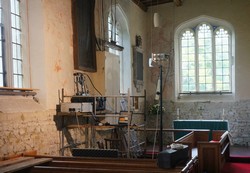Modern tools to help reveal secrets of ancient objects
Historical objects, paintings and frescoes can offer fascinating information about our past, lending insight into our heritage, history, culture and identity. The EU-funded TISCH (Terahertz Imaging and Spectroscopy for Cultural Heritage) project worked on developing terahertz imaging and spectroscopy technology to assess historical artwork and artefacts. In more technical terms, the project team developed a non-destructive tool for this purpose that employs continuous wave (CW) measurements, dispersive Fourier transform spectroscopy (DFTS), and time-domain terahertz spectroscopy and imaging (TDSI). To achieve its aims the team worked with museums, churches, a cultural heritage institute and software developers, pushing the forefront of historical object analysis. In one UK church undergoing restoration, TISCH used Terahertz time-domain scanning to search for 12th Century artwork hidden under more recent layers. Progress was also made in understanding through TDSI and DFTS how a volatile binding medium known as cyclododecane may act as a contrast-enhancing, index-matching, anti-scattering compound for porous media. With respect to panel paintings, the project’s experiments using the new technology in combination with new imaging software were successful in pinpointing defects underneath painted surfaces. These defects had not previously been detected using existing techniques, underlining the importance of these newly developed imaging solutions. Progress was also achieved with respect to monitoring outdoor ceramic sculptures in order to assess porosity and damage from rain and humidity. The project team was again successful in achieving its objective: estimating humidity in ceramics. It also found that ceramic glazing with more plasticity is much more effective at blocking moisture than brittle glazing which cracks easily. Noteworthy as well, TDS imaging technology proved useful in analysing Palaeolithic cave etchings and pigments, in addition to historic bronze vessels. The project’s exciting outcomes have been published in international journals and presented at high-level conferences, supporting chronological analysis, promoting preservation of heritage and helping tease out the secrets of historical objects.
Keywords
Terahertz Imaging, Spectroscopy, Cultural Heritage, TISCH, restoration



